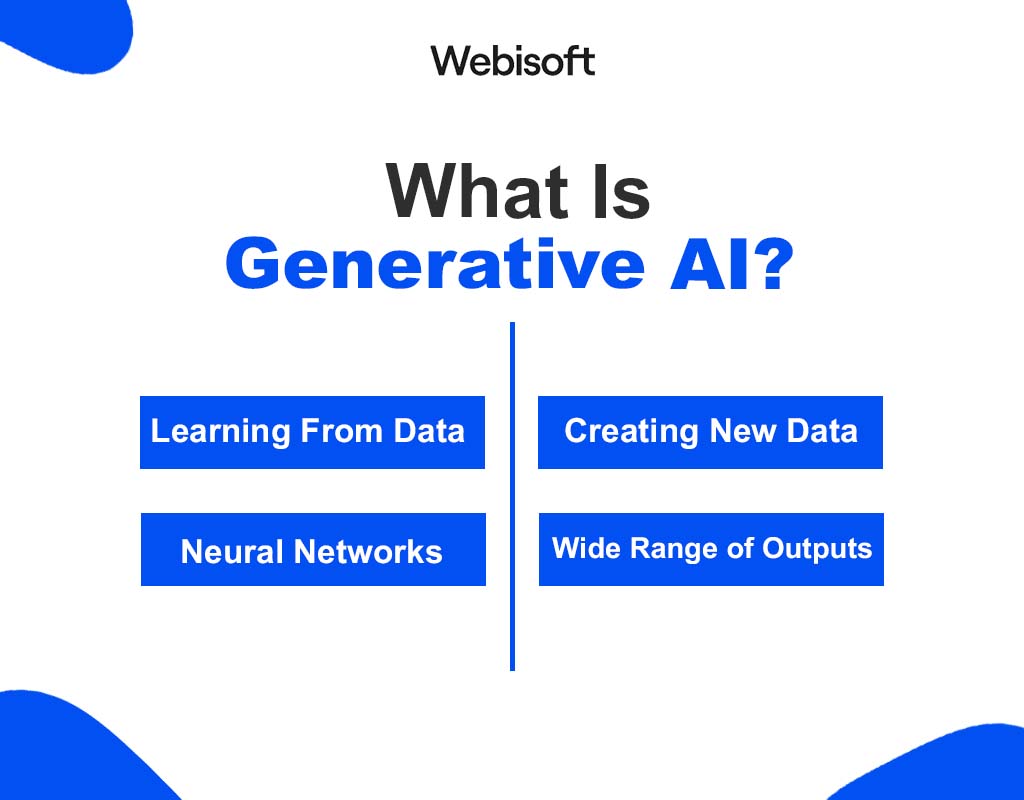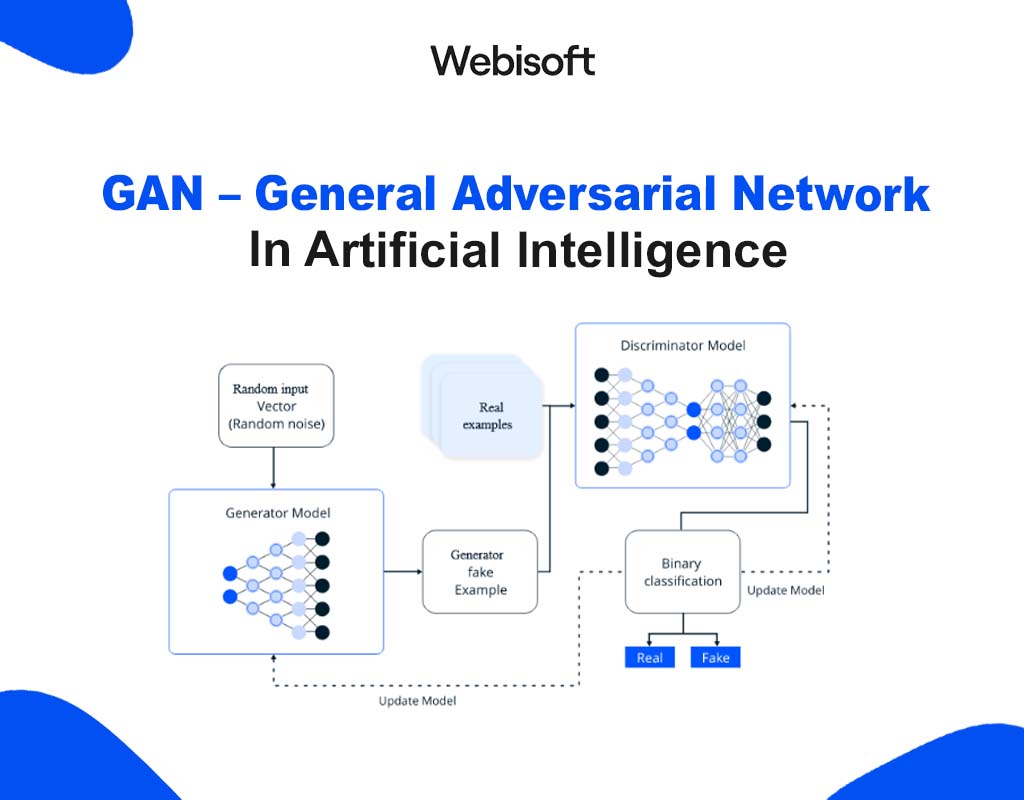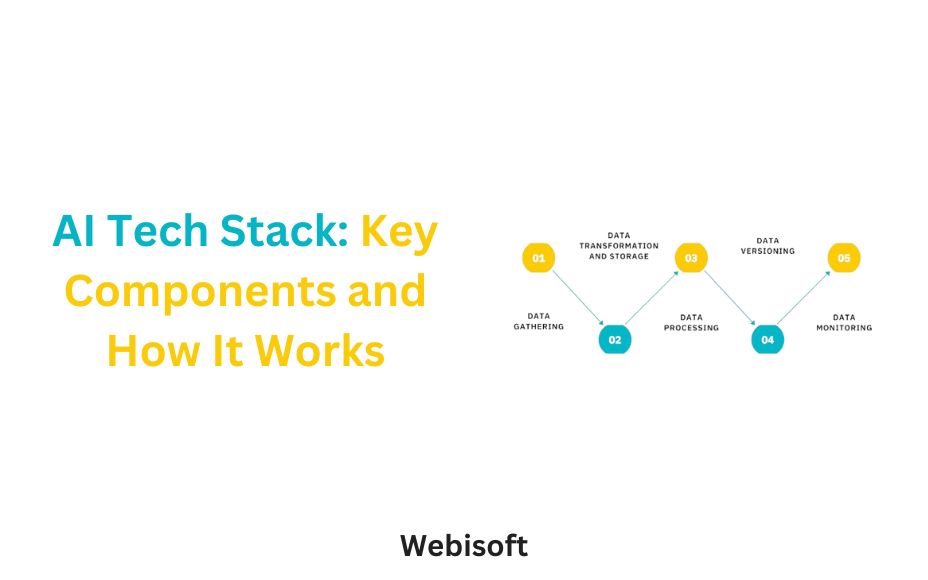AI has revolutionized and updated how we interact with technology, and the AI tech stack plays a crucial role in this transformation.
This article will discuss the intricacies of the AI tech stack, focusing on generative AI, a type of AI that can produce new data resembling the dataset it was trained on.
We’ll explore the various components of the generative AI tech stack and how they work together to create innovative AI solutions.
Contents
- 1 What Is Generative AI?
- 2 GAN – General Adversarial Network In Artificial Intelligence
- 3 Transformers Technology
- 4 An Overview Of The Generative Artificial Intelligence Stack
- 5 6. Specialization
- 6 Application Frameworks: The Cornerstone Of The Generative AI Stack
- 7 The Evaluation Platform: Measuring And Monitoring Performance
- 8 Deployment: Moving Applications Into Production
- 9 Why Is A Comprehensive Tech Stack Essential In Building Effective Generative AI Systems?
- 10 A Detailed Overview Of The Generative AI Tech Stack
- 11 Things To Consider While Choosing A Generative AI Tech Stack
- 12 End Note
What Is Generative AI?

Generative AI is a fascinating branch of artificial intelligence that focuses on creating new content. It’s a type of AI that goes beyond understanding and interpreting data.
Instead, it generates new data from scratch. Here’s a more detailed look at what generative AI is all about:
1. Learning From Data
Generative AI uses statistical algorithms to learn from a dataset. It identifies patterns, relationships, and structures within the data.
This learning process is often done through semi-supervised or unsupervised learning algorithms. It means the AI learns without explicit instructions but rather by finding patterns in the data.
2. Creating New Data
Once the AI has learned from the data, it can generate new data that resembles the original dataset. This could be anything from text, images, music, and even 3D models.
The AI doesn’t just replicate the data it has been trained on; it creates entirely new data based on its learned patterns and structures.
3. Neural Networks
The heart of generative AI is the neural network. These are complex algorithms designed to mimic the human brain’s functioning. They can learn from data and then apply this knowledge to generate new data.
Neural networks are particularly good at detecting the characteristics of specific images or text and then applying these characteristics when generating new data.
4. Wide Range of Outputs
Generative AI can produce a wide range of outputs. For example, it can generate realistic images of people who don’t exist, create music in the style of a particular composer, write articles on a given topic etc.
The possibilities are virtually endless. But it is limited only by the data the AI has been trained on.
Generative AI is a useful tool that can create new data based on what it has learned from existing data. It’s a rapidly evolving field with enormous potential, from content creation to product design.
GAN – General Adversarial Network In Artificial Intelligence

Generative Adversarial Networks, or GANs, are pivotal to generative AI. They are a type of neural network architecture designed to generate new data that resembles the input data. Here’s a more detailed look at how GANs work:
- Two-Part System: A GAN consists of a generator and a discriminator. These two parts work together in a competition, where the term ‘adversarial’ comes from.
- The Generator: The generator’s job is to create new data. It takes in random noise as input and generates data that resembles the input data it has been trained on. The generator learns patterns from the training data and uses this knowledge to create new data.
- The Discriminator: The discriminator’s role is to distinguish between real data from the training set and fake data created by the generator. It’s like a detective trying to determine which data is real or fake.
- The Adversarial Process: The generator and discriminator are in a constant battle. The generator tries to fool the data that looks as close to the real data as possible, and the discriminator tries to distinguish real data from fake better. Every time the generator manages to fool the discriminator, it gets better. This adversarial process allows the model to improve itself without any human input.
Transformers Technology
Transformers are another key component in generative AI. They are a type of model architecture used in natural language processing tasks. Here’s a closer look at transformers:
1. Sequence-Based Processing
Unlike other models that process data point by data point, transformers process data in sequences. This makes them more efficient when the context is important, such as in language translation or text generation tasks.
2. Translation and Text Generation
Transformers are particularly good at translating text from one language to another or generating text.
They can understand the context of a sentence or paragraph. It allows them to generate more accurate and coherent outputs through deep learning.
3. Foundation Models
Transformers can also be used to create foundation models pipeline. These are large-scale models trained on a diverse range of modern internet text. They can be fine-tuned for tasks such as transforming natural language requests into instane commands.
GANs and transformers are two key components of generative AI management. They each play a crucial role in learning from data and generating new data, contributing to the power and versatility of generative AI.
An Overview Of The Generative Artificial Intelligence Stack
The generative AI tech stack is a comprehensive collection of tools, technologies, and frameworks used to develop and deploy generative AI applications.
It’s a roadmap that guides developers through the complex landscape of generative AI. Here’s a more detailed look at the generative AI tech stack. Read this:
1. Foundational Understanding
The tech stack provides a foundational understanding of the essential components involved in generative AI.
This component involves everything from the programming languages to develop AI applications to the platforms and services used to deploy and manage these applications.
2. Guiding Development Decisions
The tech stack guides developers, helping them make informed decisions especially in model serving. It helps developers select the appropriate frameworks, enterprise software, libraries, and platforms that align with their web account and AI project’s overall goals and requirements.
This ensures that the technologies used are compatible with each other but also suitable for the project’s specific needs. It provide individuals strength to complete a project.
3. Interoperability And Integration
The generative tech stack facilitates better interoperability and integration different components within the generative AI system.
This is crucial for the smooth functioning of the AI application. It ensures that all the different components include within the system can work together seamlessly.
4. Selection of Tools And Frameworks
The tech stack helps developers choose the right tools and frameworks for their projects. This includes machine learning frameworks, data processing tools, and cloud services.
The choice of tools, filter and frameworks can significantly impact the performance and efficiency of the generic tech or AI application.
5. Future-Proofing
The tech stack has a significant contribution to future-proofing the AI application. By choosing widely supported and regularly updated technologies, developers can ensure that their application remains relevant and functional.
6. Specialization
The tech stack serves as a basis for specialization. Once developers have a solid understanding of the general tech stack, they can delve deeper into specific areas of interest. For example, they delve into natural language processing, computer vision, or reinforcement learning.
In conclusion, understanding the generative AI tech stack is crucial for anyone developing AI applications.
It provides a comprehensive overview of generative AI’s various components and technologies. And it serves as a guide for making informed decisions about the tools and frameworks to use.
Application Frameworks: The Cornerstone Of The Generative AI Stack
Application frameworks form the cornerstone of the stack. These frameworks, such as LangChain, Fixie, Microsoft’s Semantic Kernel, and Google Cloud’s Vertex AI, help developers create stack applications.
All these can autonomously generate new content, develop semantic systems for natural language search, and even enable task performance by AI agents.
1. Models: Generative AI’s Brain
At the core of the generative AI stack are Foundation Models (FMs), which function as the ‘brain’ and enable human-like reasoning.
These stack models can be proprietary, developed by organizations such as Open AI, Anthropic, or Cohere, or they can be open-source. Developers also have the option to train their models.
2. Data: Feeding Information To The AI
Language Learning Models (LLMs) can reason about the data they have been trained on. Developments need to operationalize their data to make the models more effective and precise.
Data loaders and vector databases play a significant role in this stack process. It help developers to ingest structured and unstructured data and effectively store and query data vectors.
The Evaluation Platform: Measuring And Monitoring Performance
Choosing the right balance between model performance, cost, and latency is a challenge in generative AI.
To overcome this, developers utilize various evaluation tools and technology that help determine the best prompts. Also the technology helps to track online and offline experimentation, and monitor model performance in real time.
Various No Code / Low Code tooling, tracking tools, and platforms, like WhyLabs’ LangKit, are used for prompt engineering, experimentation, and observability.
Deployment: Moving Applications Into Production
The final phase in the generative AI tech stack is deployment. Developers aim to move their applications into production through utilizing the artificial intelligence technology.
They can choose to self-host these applications or use third-party services for deployment. Tools like Fixie enable developers to seamlessly build, share, and deploy AI technology stack.
Why Is A Comprehensive Tech Stack Essential In Building Effective Generative AI Systems?
A comprehensive tech stack is essential in building effective generative AI systems. It includes machine learning frameworks, technical support, programming languages, cloud infrastructure, and tech data processing tools.
These elements work together to create a robust and efficient system capable of handling the complexities of generative AI.
A Detailed Overview Of The Generative AI Tech Stack
The generative AI tech stacks can be divided into three layers: the application layer, the model layer, and the infrastructure layer. Each layer has a specific role and contributes to the overall functionality and efficiency of the system.
1. Application Layer
The application layer is where generative AI applications are built and deployed. This includes end-to-end apps using proprietary models and apps without proprietary models.
2. Model Layer
The model layer is where the generative AI models are developed and trained. This includes general AI models, specific AI models, and hyperlocal AI models.
3. Infrastructure Layer
The infrastructure layer provides the necessary computational resources and services for developing and deploying generative AI applications.
Things To Consider While Choosing A Generative AI Tech Stack
Choosing the right generative AI tech stack is a critical decision. It can influence the success of your AI project. Here’s a more detailed look at the key factors you should consider:
1. Project Specifications And Features
The first thing to consider is the specific requirements of your project. What are you trying to achieve with your AI application software? What features does it need to have? These questions’ answers will guide your choice of tools and technologies.
For instance, if you’re building a chatbot, you might need natural language processing tools or software. You might need computer vision libraries if you’re working on image recognition.
2. Experience And Resources
Your team’s experience, management capacity and resources are another important factor. Do you have the necessary skills to use a particular tool or technology?
Do you have the resources to support it? If not, consider alternatives or invest in training and resources.
3. Scalability
Scalability is a crucial factor, especially when choosing a tech stack. As your project grows, you’ll need a technology stack to grow with it.
This means choosing technologies that can handle increasing data and complexity without compromising performance.
4. Web Account Security
Security is critical in any tech project, and AI software is no exception. You’ll need to consider the security features of your tech stack, including data protection, user authentication, and system integrity.
5. Software Integration
How well do the components of your tech stack work together? Good integration can make your project run more smoothly and efficiently. So it’s worth considering how well your chosen technologies will integrate both the hardware and software.
6. Support And Community
Finally, consider the level of support and community around your chosen technologies. A strong cloud community can provide valuable resources and assistance. And regular updates and support can help keep your cloud project running smoothly.
Choosing a generative AI tech stack is a complex decision that requires careful consideration of various factors. By taking the time to consider your project’s needs, your team’s skills and resources, you can choose a tech stack that will support your project’s success.
End Note
Understanding the AI tech stack is crucial for anyone developing AI applications for their enterprise. It provides a comprehensive overview of generative AI’s various components and technologies.
And it serves as a guide for making informed decisions about the tools and frameworks to use. By gaining a solid understanding of the AI tech stack, developers can create more effective and efficient AI systems, driving innovation and growth in AI.
